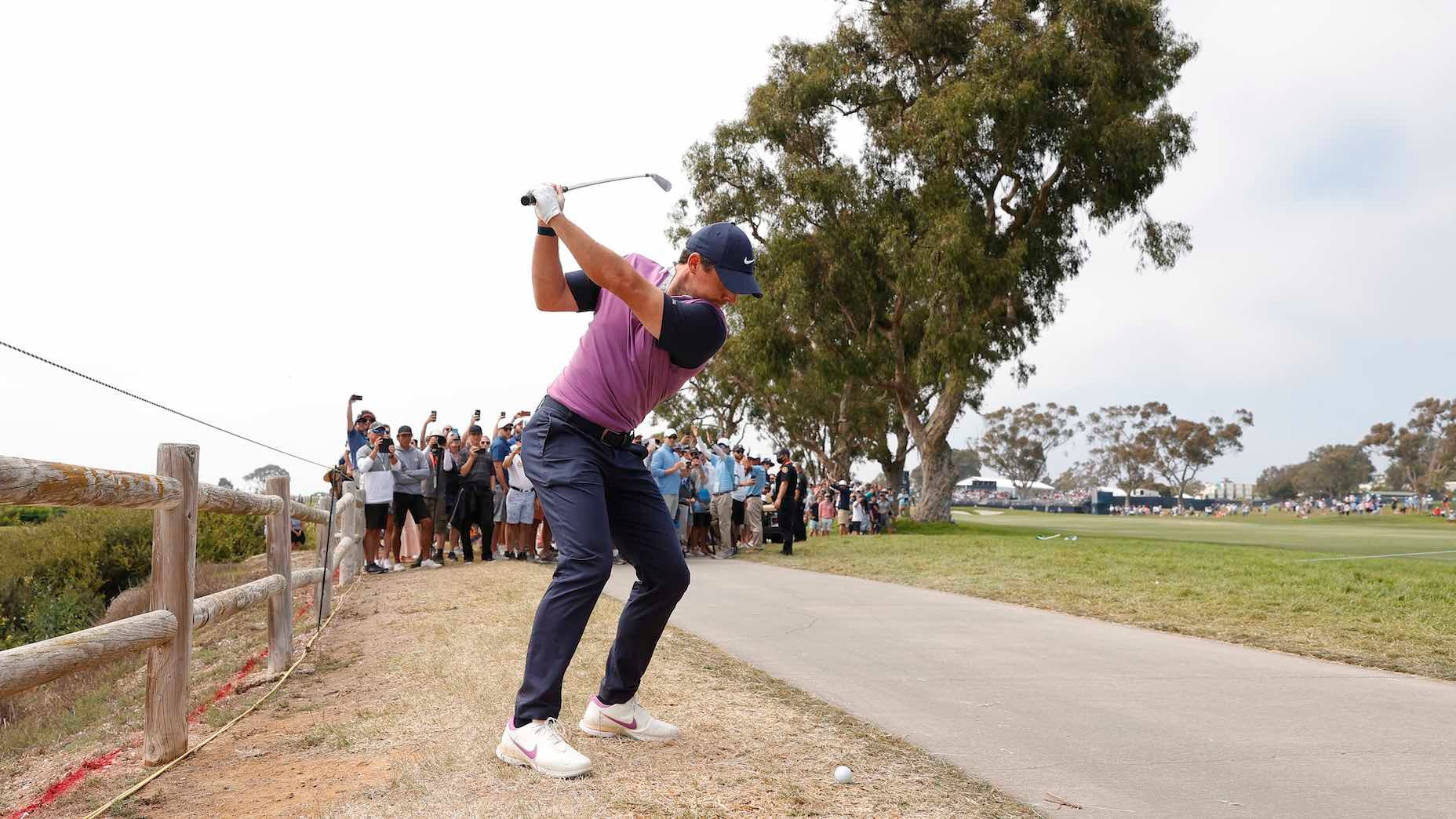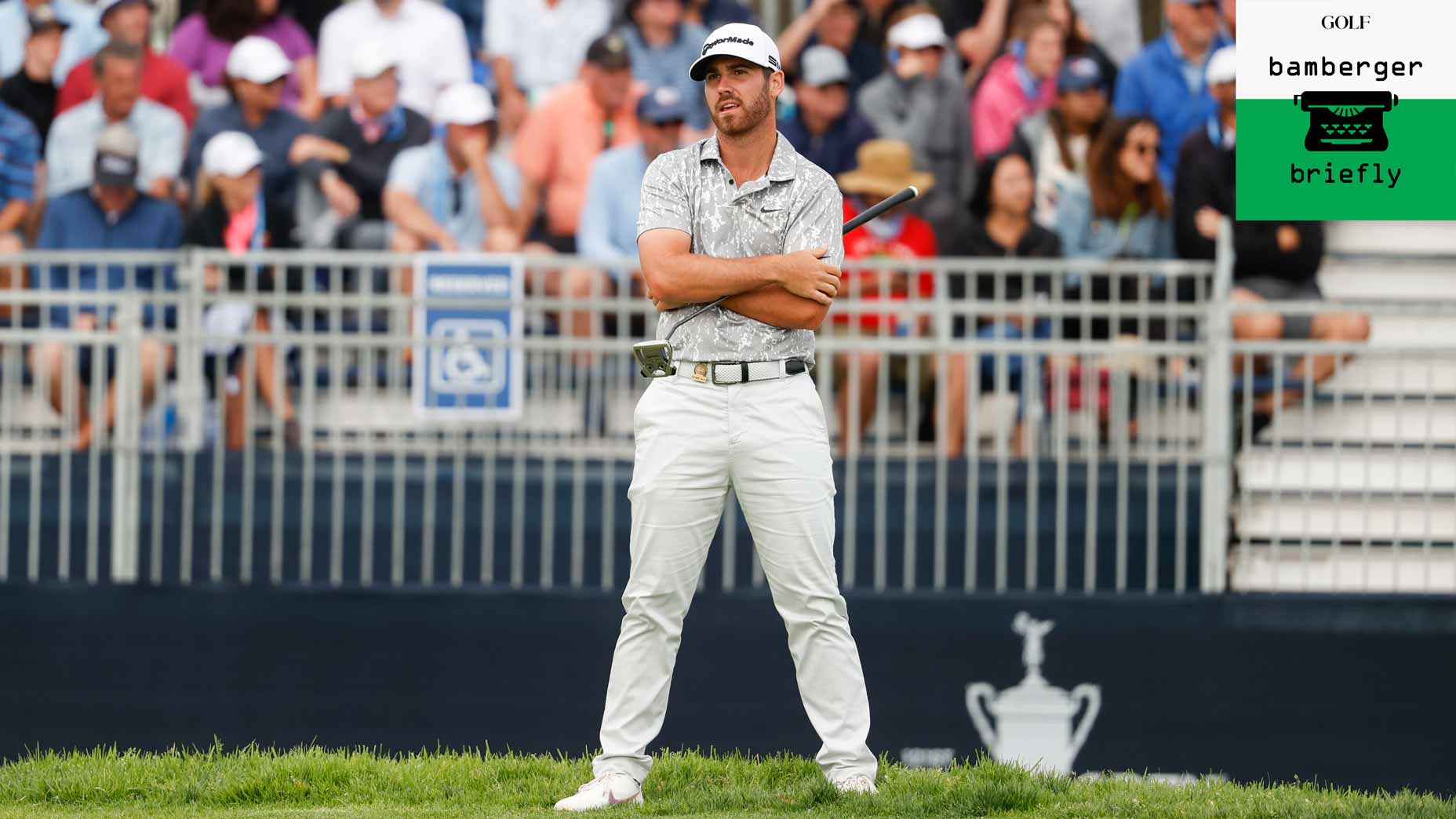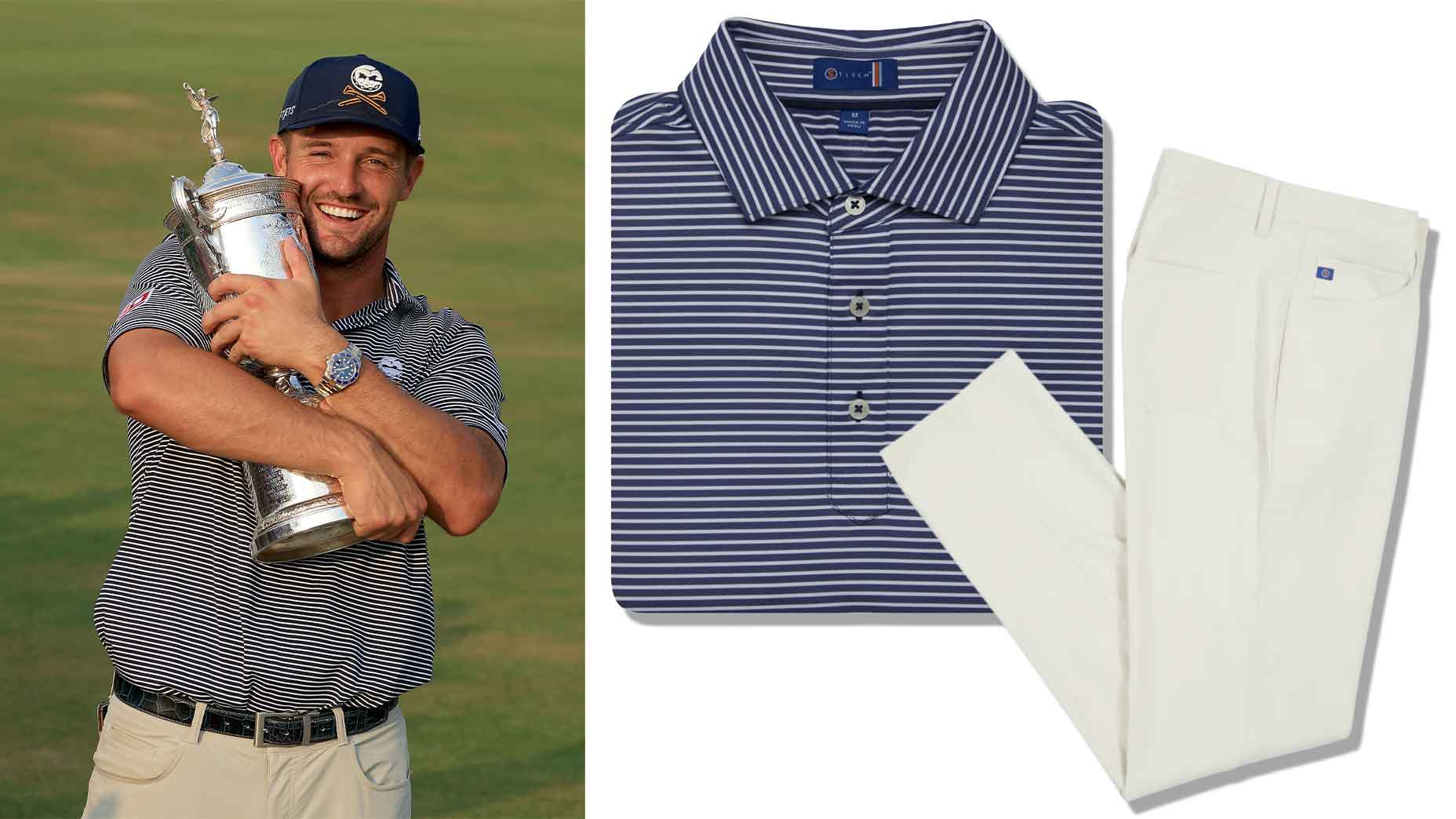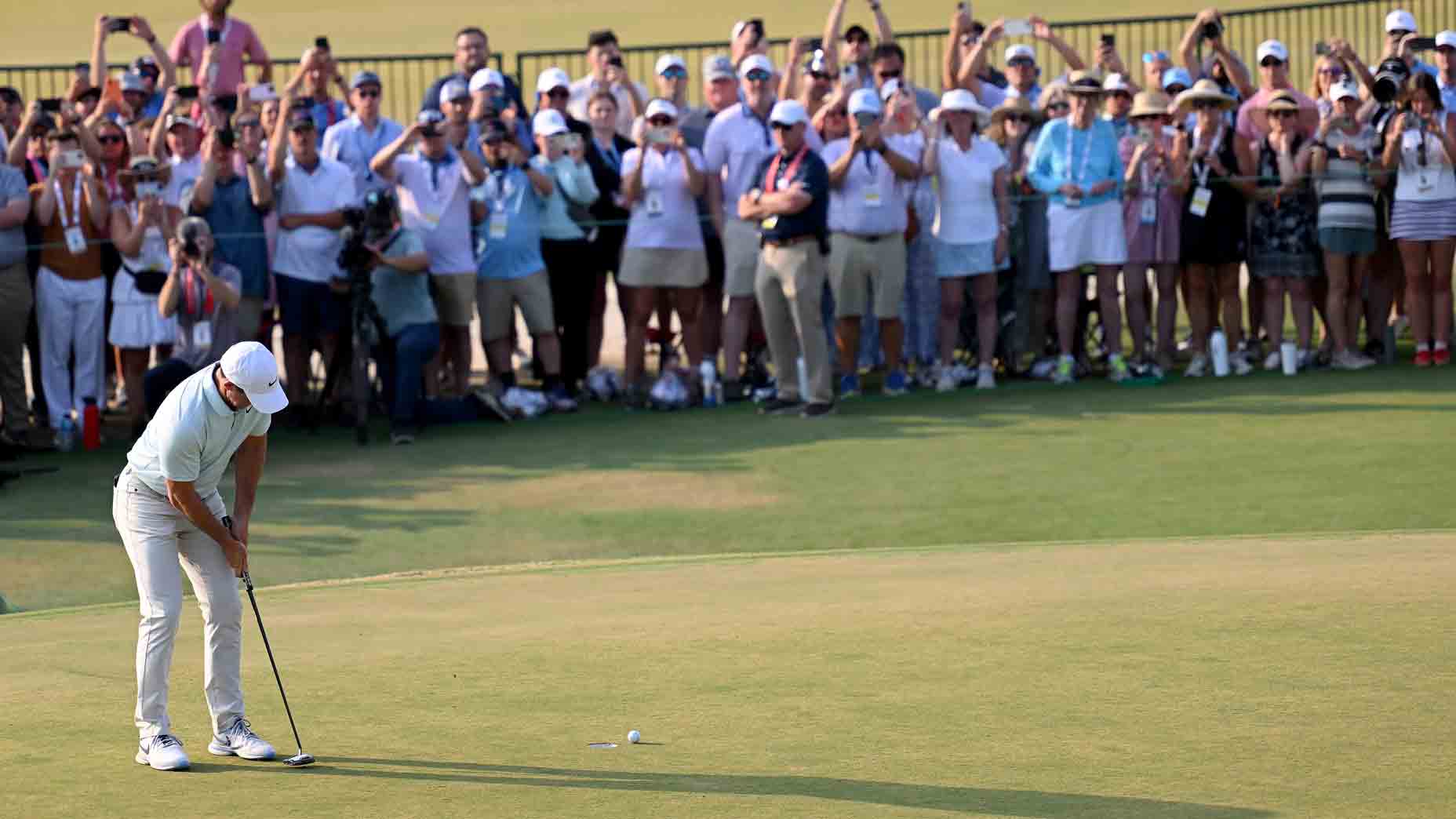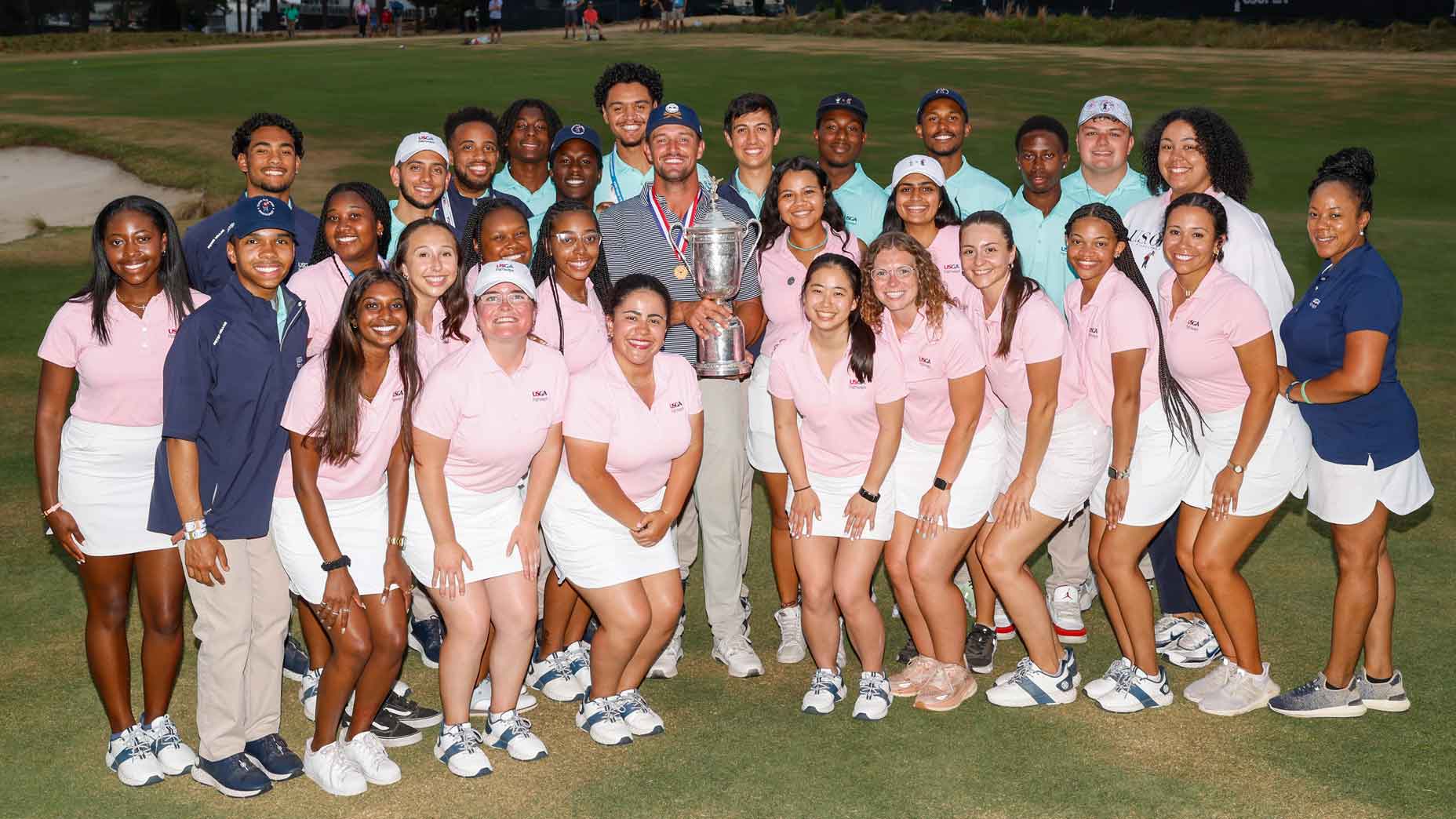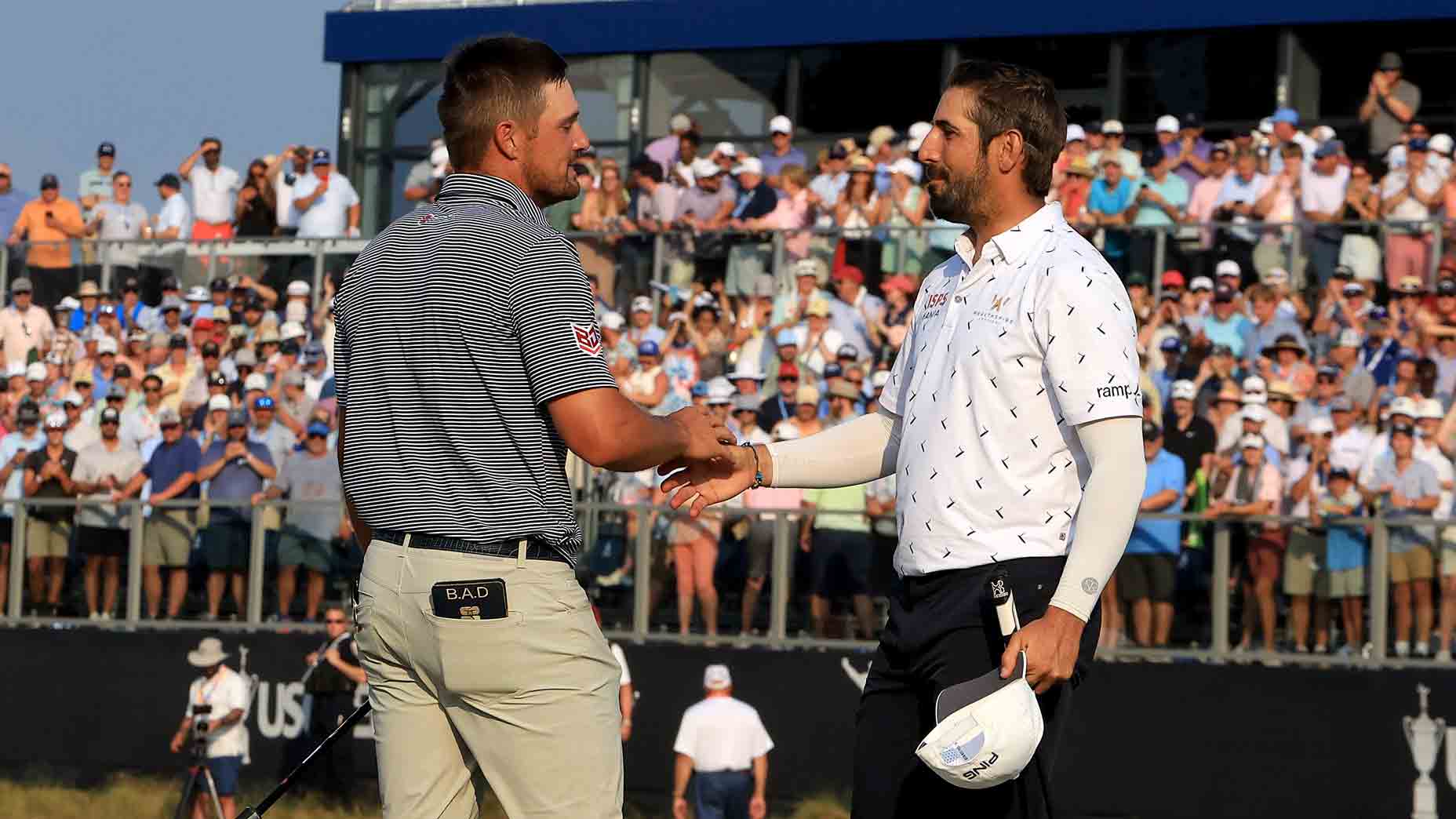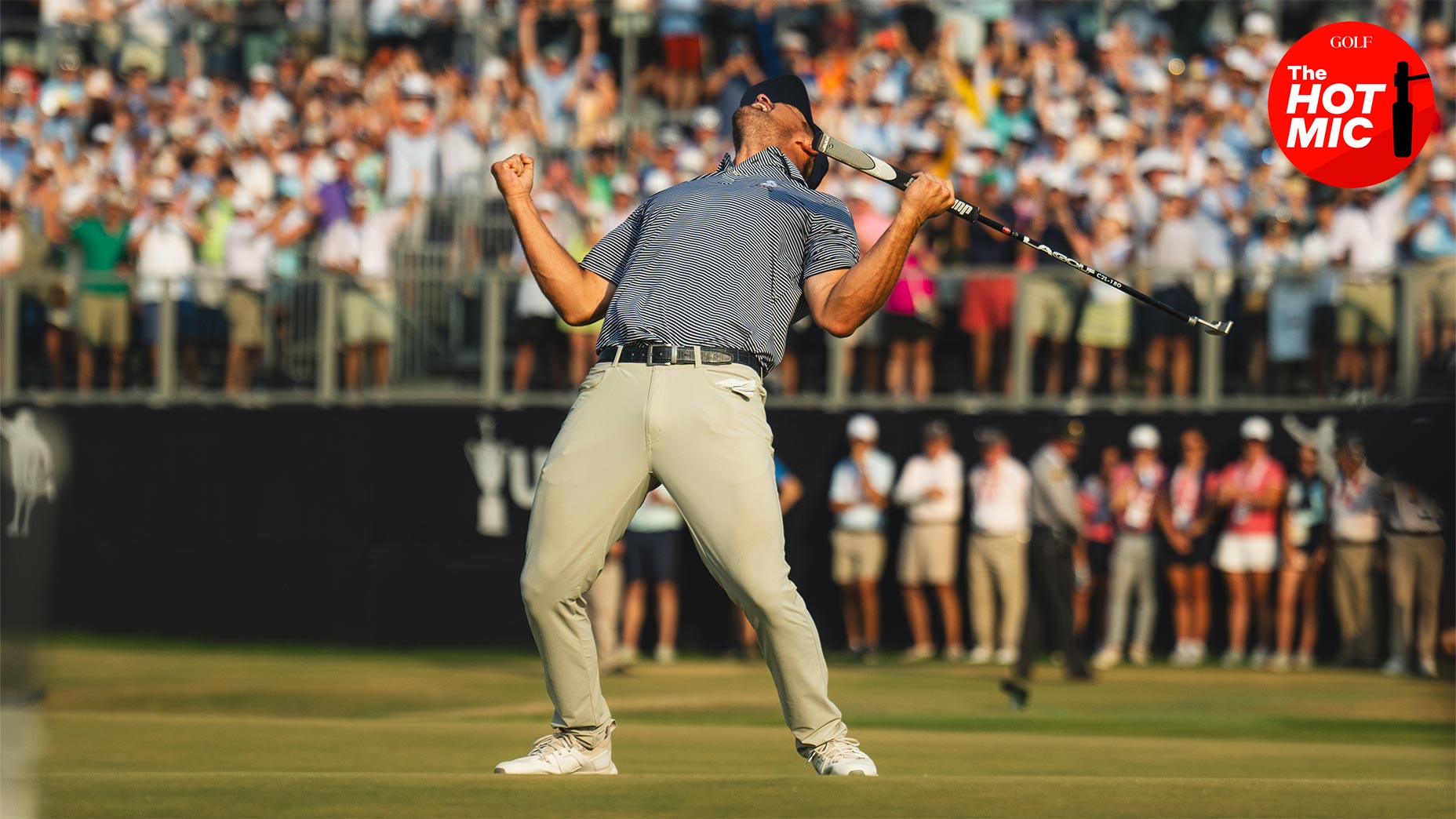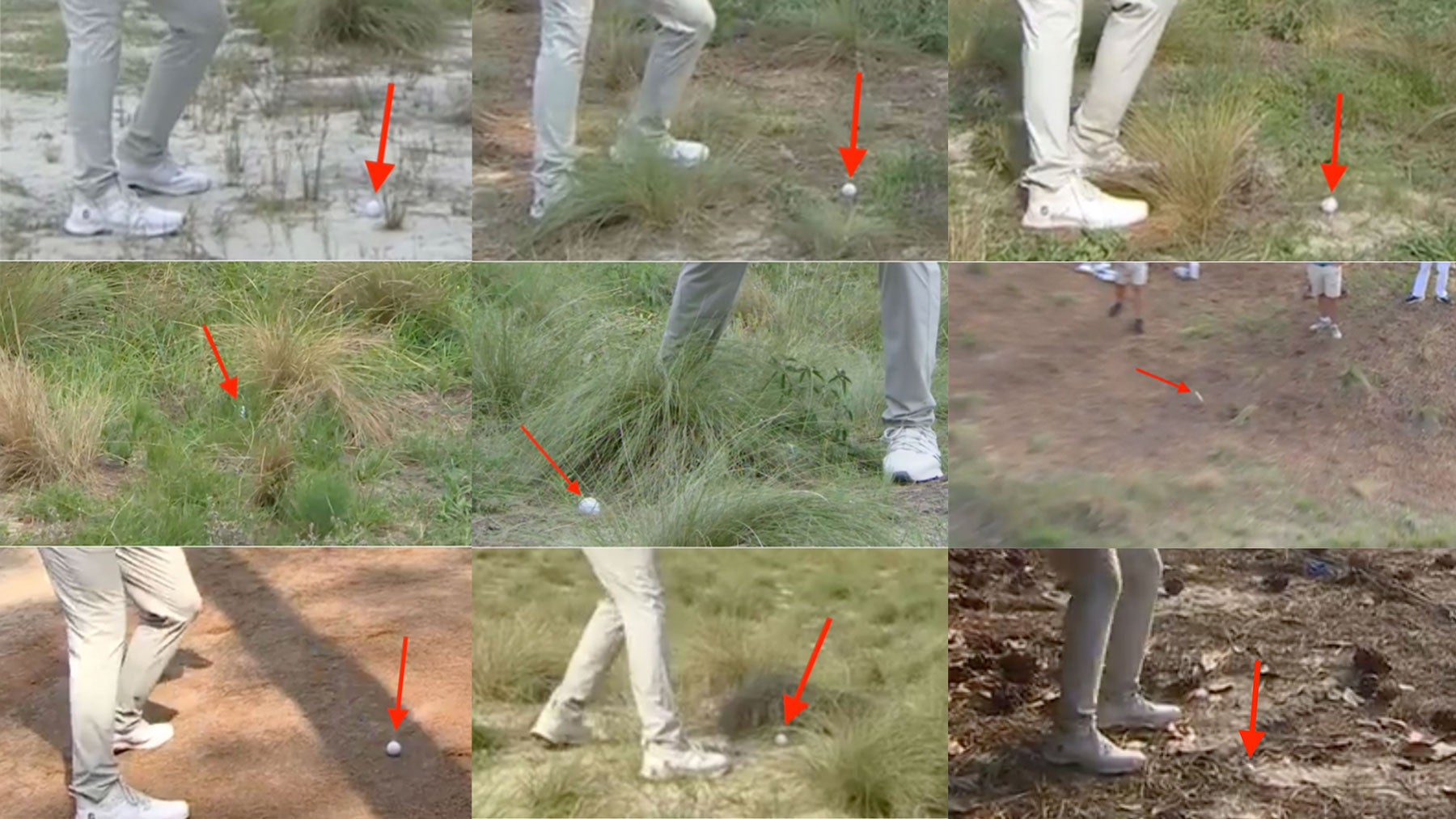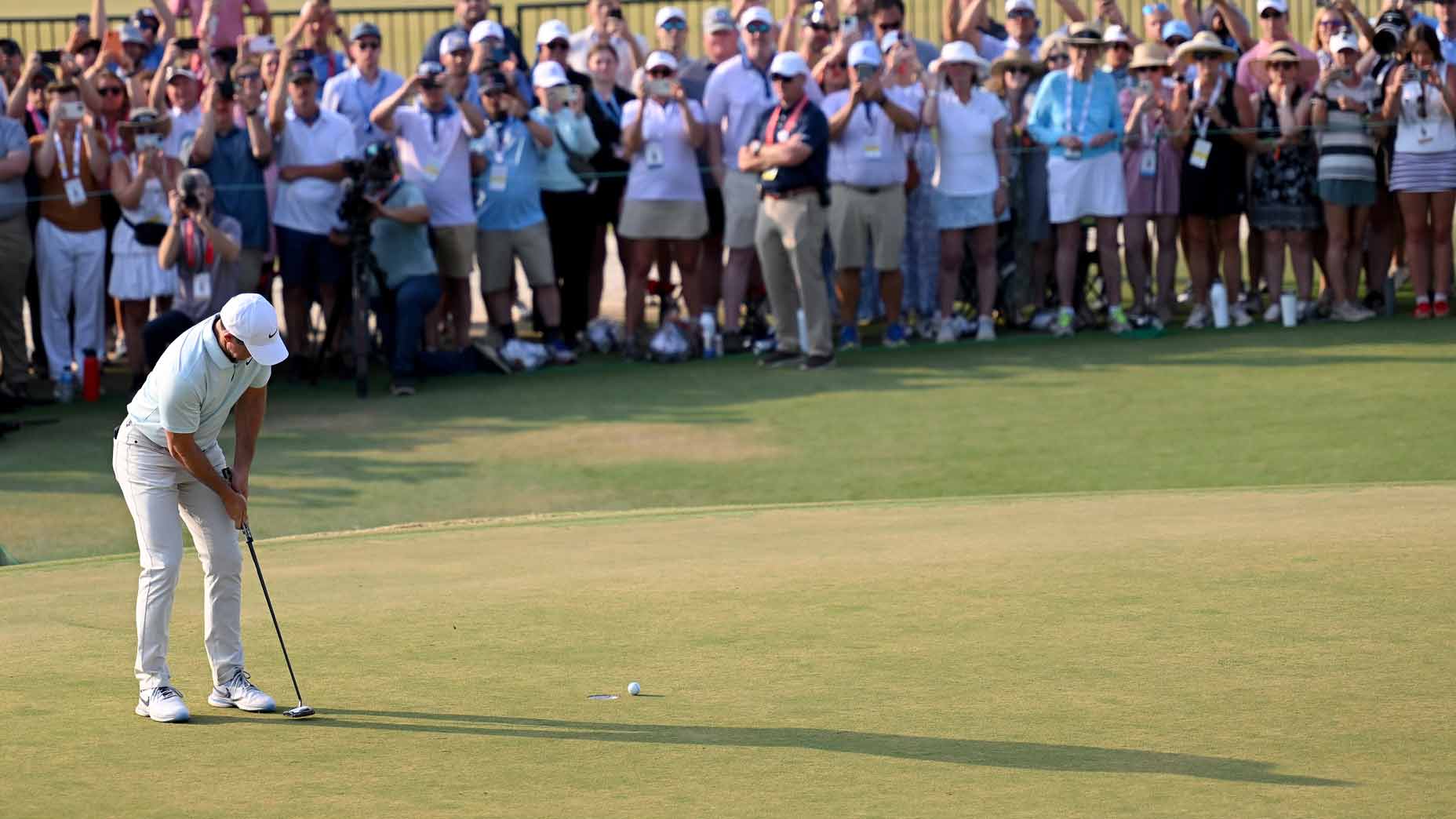What a rules gaffe taught us about U.S. Open co-leader Russell Henley
- Share on Facebook
- Share on Twitter
- Share by Email
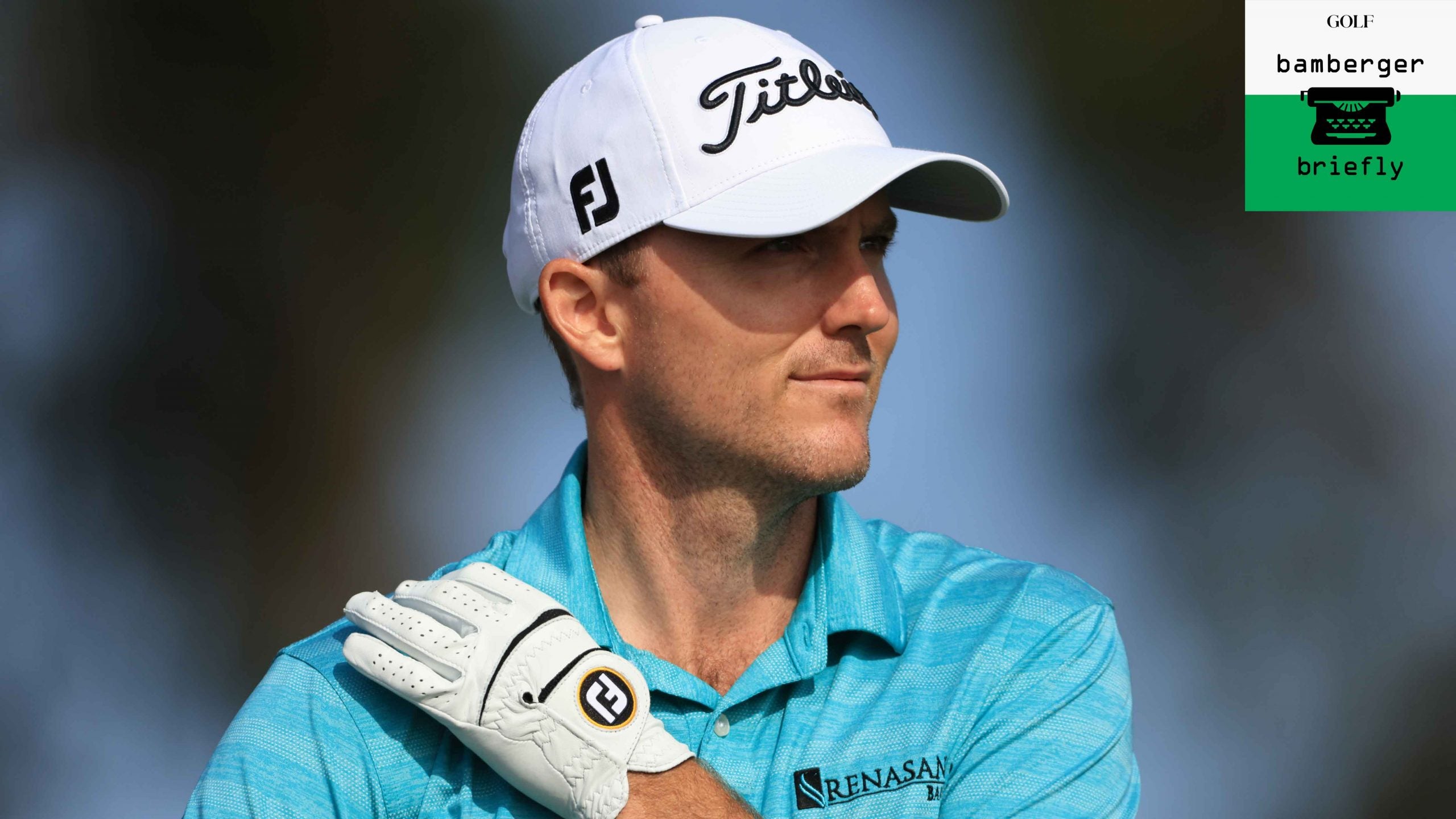
At five under, Russell Henley has a share of the 54-hole lead at the U.S. Open.
getty images
LA JOLLA, Calif. — This is why we love golf, professional golf, major-championship golf, seaside golf. Why we love the people who play it and their caddies. The organizations that stage these storied events, on hard courses, old trophies waiting backstage. (Take a bow, USGA.) The architects who cultivate these playing fields. (Rees.) The wind-burned security guards, the fans with their merch bags. The suited broadcasters and sneakered reporters who disseminate the varied and excellent stories that come out of major-championship golf, despite the absurd over-management of the players by far too many player managers.
But most especially — once more with feeling — the people who play it.
It’s a varied and excellent leaderboard.
Love King Louie. Rory, a gem. Go on down the line.
Rory McIlroy’s ‘boring’ U.S. Open strategy paying dividends at Torrey PinesBy: Dylan Dethier
But I’m rooting for Russell Henley.
The players, as they always have, reveal themselves with how they handle bad lies and lucky bounces. How they handle their caddies, their playing partners, their fans. How they handle rules issues. How they handle themselves.
Enter Russell Henley.
Henley did something, mid-November, 2019, that has stayed with me and others. He was playing in Mexico, at the Mayakoba Classic. He shot a tidy 66 to start. After completing his second round, he realized that he had inadvertently and repeatedly violated a rule — the so-called One Ball Rule — that had no impact on his score whatsoever. He did it in a manner that no playing partner or fan or rules official could have possibly known. But he knew, and that was enough.

Henley was signing autographs after a round, signing game balls, when he realized he had been using one type of Pro V1x for most of the round, and a prototype Pro V1x, with slightly different marking, for four holes. He shot 69, but he had violated the One Ball Rule. With a two-shot penalty on each of those four holes, his 69 became a 77. He missed the cut.
I’ve been rooting for Henley ever since.
Arnold Palmer used to say, “I’m a USGA man.” Arnold won a U.S. Amateur and a U.S. Open and later was the honorary chairman of the USGA. What did Arnold mean? Loads.
Matt Wolff’s remarks Friday were as raw and revealing as you will hear from a professional golferBy: Michael Bamberger
That the game’s code of grace-under-pressure was elemental to him. That he, like the USGA, liked fair, difficult courses. That he embraced the idea of leaving the game and the course in better shape than you found it.
And that the rulebook published every two years by the USGA, in concert with the R&A, is the necessary and sacred starting point for any serious competition. Yes, Palmer had his issues with individual rules and rules officials over the years. But he understood that the rulebook was at the heart of the game. And so does Henley, who is in three-way tie for first through three rounds.
Henley was a college star at Georgia, but he never won a U.S. Amateur. He’s 32 and is playing in his eighth U.S. Open but he’s never had a top-10 finish. His best finish was in his first Open, in 2010, when he was the low amateur. No one is confusing him for Arnold. (Jordan Spieth is more likely.) But he knows what Arnold meant, when he said he was a USGA man.
Who will win this grueling U.S. Open? We rank the contenders at Torrey PinesBy: Sean Zak
“I hope I’m a USGA man,” Henley said Saturday night. For an entourage he had . . . nobody. Henley’s balky player credential was stuffed in his back pocket with a long blue lanyard dangling along his right leg. “I know what he’s saying. I think getting rewarded for being mentally tough and just hitting good shots under pressure is kind of what U.S. Opens seem to be all about. You can’t really fake it around a U.S. Open course. You kind of have to have everything going. I like that — I get what he’s saying.”
Henley’s play was gritty on Saturday. After rounds of 67 and 70, he shot a 71, playing in the last twosome with Richard Bland, on a day when 71, even par, was about as good a score as he could make. He may look like Spieth, who won the 2015 U.S. Open, but Spieth’s game is loaded with style. Henley’s game is out of the fairways-and-greens mode, the one used by many Open winners. Scott Simpson, for instance, your 1987 champion. There’s a long and worthy U.S. Open tradition of that working, too.
The rulebook is what makes the game, plain and simple.” Russell Henley
There is no way to know how many players would have called that penalty on themselves in Mexico, 18 months ago, as Henley did. Bobby Jones once said, famously, “You might as well praise a man for not robbing a bank as to praise him for playing by the rules.” Still, pretend you’re Henley: You and only you know you have broken a rule. It would be easy to say to yourself, “Dumb rule. Made no difference to my score. I’m playing the weekend and cashing my check.” Henley did not do that.
“Gosh, I feel like you’re always going to feel better about making the right decision,” he said Saturday night. “It was a pretty easy one. I think the rulebook is what makes the game, plain and simple. The rules make the game difficult — and they make it fair.”
How can you not root for this guy?
Richard Bland, 47-year-old Englishman, shot a third-round 77 playing with Henley, and still he was willing to talk to a reporter after his round. (That says something.) He had no entourage. (That says something.) He and Henley talked a little through the round, but not much. Both players had their hands full.
I told Bland about what Henley did in Mexico.
“Well,” Bland said, “you’d like to think that every player would do that, but—”
He didn’t finish his thought.
“Russell’s a really nice fellow, with a lot of game,” said the man who had the best view of Henley’s third round. “He played hard. He should play well.”
Michael Bamberger may be reached at Michael.Bamberger@Golf.com
Latest In News

Michael Bamberger
Golf.com Contributor
Michael Bamberger writes for GOLF Magazine and GOLF.com. Before that, he spent nearly 23 years as senior writer for Sports Illustrated. After college, he worked as a newspaper reporter, first for the (Martha’s) Vineyard Gazette, later for The Philadelphia Inquirer. He has written a variety of books about golf and other subjects, the most recent of which is The Second Life of Tiger Woods. His magazine work has been featured in multiple editions of The Best American Sports Writing. He holds a U.S. patent on The E-Club, a utility golf club. In 2016, he was given the Donald Ross Award by the American Society of Golf Course Architects, the organization’s highest honor.

